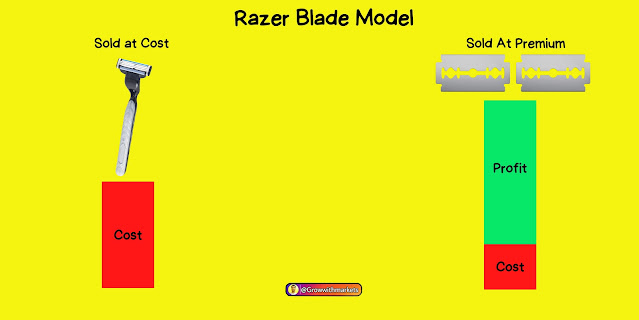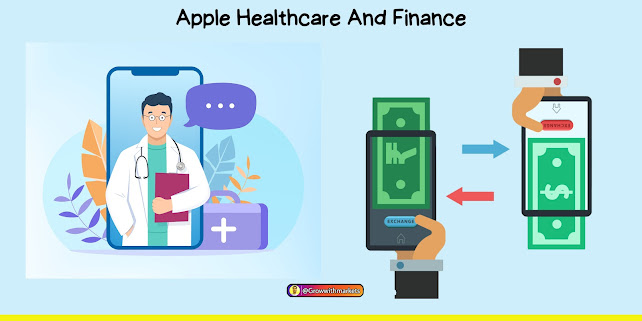Hey Friends, on August 19, 2020, Apple was the first corporation to reach a mind-boggling market valuation of $2 trillion dollars, and this news confirmed how large and powerful that Apple Brand is.
But, on the one hand, the corporation was setting new records and setting new benchmarks.
Apple is experiencing some significant issues in terms of iPhone sales. Apple's most significant product has not reached peak sales since 2014.
The corporation is being prosecuted for antitrust violations in the European Union, and major players such as Epic Games & Facebook are publicly opposing its practices.
Apple's Persistent Problem
So, the issue is, what is Apple's persistent problem, and what is Tim Cook trying the de-risk Apple from in this crisis?
Most importantly, as investors and business students, what are the key indicators to keep an eye on in order to comprehend the oncoming wave of technological disruption?
This is a narrative that begins in 2007 with Steve Jobs' momentous unveiling of the iPhone. As soon because this revelation occurred, the world went berserk, and the iPhone became a phenomenon.
Every year, even when a new iPhone is ready to be released, the craze and anticipation for the new model never subsided, and the reason for this was because the iPhones that Apple released back then were truly remarkable.
If you compare the iPhone to other phones, you will see a significant difference between the two of them. Other phones had better keypads.
While other phones are catching up with touchscreen, the original iPhone was revolutionary due to a tremendous jump towards touchscreen and the debut of the renowned app store. The iPhone 3G is twice as quick as the first iPhone.
Apple Revolution
The app store started to include a plethora of apps, greatly increasing the usefulness value of the phone.
Similarly, the iPhone 4 was revolutionary because of the FaceTime,HD recording cameras and, most crucially, the launch of icloud.
Which allowed Apple users to smoothly browse between Apple devices, something only Apple customers can completely understand.
Icloud was famous, and then there was the iPhone 5, which had a fingerprint scanner and Siri was completely functioning.
This has been followed by the iPhone 6, which is not only one of the best-looking phones on the Market. However, it also established the gold standard for a camera inside a mobile phone.
This is why the iPhone 6 had become the best-selling iPhone in history, with over 222 million devices sold, yet by this time, in 2015, Apple had grown dangerously dependent on the iPhone.
Whereas more than 60% of the Company's income came from iPhone sales, things began to change as technology became more affordable and competition began to catch up. There was only a limited amount of innovative announcements which Apple could make for the iPhone.
We watched every other phone start with fingerprint face unlock a superb camera and all due to Google Assistant looks to be lot better than Siri today and not so shockingly iPhone has not topped sales in 6 years after establishing a record of 231 million devices.
Apple Earnings
Although revenue in 2021 is larger than in 2015 due to the dramatic increase inside the cost of a iPhone, unit sales appear to be lower than in 2015.
As a result, Apple is already on the verge of reaching rock bottom since it can no longer raise the price of a iPhone. There is virtually little opportunity to gain new customers unless the price reduces dramatically, and if the price drops, profit margins will suffer.
So, with Apple's most critical earnings pillar at danger, the question is, what really is Apple doing it to de-risk itself?
The explanation may be found in a 2016 official announcement by Tim Cook. When he stated that Apple's revenue through Software Services will be doubled by 2020.
This effectively suggested that Apple would transition from a Hardware firm to a Software Services one.
How Apple created their ecosystem using three different sorts of products The first was the entry product, which got you into the ecosystem, and then you had retainers, which were services like imessages, apple arcade filmic pro, and even your spotify playlist which kept you hooked, so that when you go to purchase another laptop, you are more likely to select a macbook pro.
This is an upsell product, and then after purchasing the second Apple device, you get these unique ecosystem capabilities such as airplay, airdrop continuity, and icloud that tie together.
Existing gadgets work together so well that this really makes breaking from the Apple ecosystem even more difficult, but Apple wishes to make a modest adjustment. Rather than having these applications function as retainers, Apple wants to develop new apps and services.
In summary, Apple is using the Razor Blade approach.
What exactly is the Razer Blade Model?
The Razer blade model is one in which a corporation sells the initial product at a lower margin in order to offer customers a low cost high margin product on a regular basis, generating recurring money for the Company.
In the case of Apple, this is a huge matter since we're talking about one of world's most powerful businesses altering its business model.
Apple is so strong that it is capable of simultaneously inventing new product categories and destroying an age-old Industry.
The iPad was a great illustration of this, since it formed a new category among gadgets, and subsequently the Apple Watch disrupted an age-old business.
In just two years, Apple surpassed a century-old firm like Rolex and became the world's top watch producer.
So, why is Apple especially moving into Software Services, and how will it Influence Industry Leaders in several domains for starters, similar to the underlying premise of Razer Blade Model?
Selling Software Services is a high margin recurring income channel that also serves as a retainer hook to keep customers in the ecosystem.
If you look at the data, it's clear that between 2015 and 2021, iPhone revenue has consistently increased from around 155 billion to 191 billion dollars.
The income from services has increased by 23.8 percent, increasing from 19 billion to 68 billion dollars.
The trick here is that although the profit for an iPhone is only 35 percent, the margin for Software Services is roughly 60 percent. In fact, according to Bloomberg, the app store has a profit margin of 78 percent as of 2019.
So the issue is if Apple will enter the sas (Software as a Service) area.
And what were the disruptions that Apple will generate in various industries? According to my study, there are three distinct areas in which Apple will try to cash in. The first and most obvious option is leveraging the aggregator powers to notify you about.
Apple could easily launch a service which is in direct rivalry to an existing app since it has a ton of data on which apps are now the best selling apps with in app store and has exact facts about who buys it as well as what they use it for.
In India, for example, whereas a Spotify family package for iOS costs 199 rupees, Apple Music costs only 149 rupees, with the caveat that if you use Spotify Premium on your iPhone, Apple receives 15 rupees, for a total of 29 rupees. Read More: The Rise Of Esports: Evolution Of Esports Industry
Apple Music generates 149 rupees in income for Apple. As a result, Spotify is at a unfair disadvantage since it must either raise its prices or reduce its profits, whereas Apple gains both ways.
This is why the Anti-trust case against Apple is causing such a stir with in European Union.
Apple Healthcare And Finance
The second method is to invest in High-Potential Industries such as Healthcare and Finance.
As you may have seen, they've already established a solid base with the Apple Card and also the Apple Watch, whereas on the other hand, Apple consumers are by default.
The world's most affluent audience, making them ideal for Financial Services.
On the other hand, Apple Watch has a massive quantity of data to offer to its Clients in the form of Health Care Services.
It's such a revolutionary technology that it has a wide range of applications. An elderly parent may choose to share their heart, health data with a family member; a person may choose to share their reproductive window insights with their spouse; and a Parkinson's patient may choose to share their mobility data with such a physical therapist.
This also offers backend integration of data due to which Healthcare Centers all over the united states may smoothly access and exchange patient data with one other.
In comparison to the current time-consuming method, this will allow people to complete hospital treatments in a matter of seconds. This is how Apple is establishing the groundwork for a much-needed healthcare system, beginning with the United States.
As a result, with the Apple Card as well as the Health App, it would not be shocking if Apple had become the world's largest health insurance provider or perhaps the biggest credit card Company.
So, the issue is, Is Apple truly in difficulty? From what I can tell, apple is in trouble.
So, Apple is actively pursuing its Software Services Industry, and with the release of the M1 Processor, the Company is only getting started with the next great change in the Digital World.
Read More: How India’s Focus On Semiconductor Manufacturing To Control Semiconductor Crisis
Well, if you like this post then subscribe Our Growwithmarkets Youtube Channel for latest videos/posts Here Is Some Latest Videos, thankuuu.....











0 Comments